Warrnambool is the major regional centre in south west Victoria.
It is a port town, at the western end of the Great Ocean road. The first European to known to visit Warrnambool was Lieutenant James Grant in 1800 in the Lady Nelson. Matthew Flinders in the Investigator, and the French explorer Nicholas Baudin visited in 1802. Whalers visited the area often in the early 1800s. Settlement began in 1840, the first post office opened in 1849. The Victorian gold rush of the 1850s caused rapid growth and Warrnambool was gazetted as a municipality in 1855, a town in 1883, and a city in 1918.
Warrnambool’s economy is mainly based on the agriculture of the area. Being at the western end of the Great Ocean road means that tourism is also a big thing.

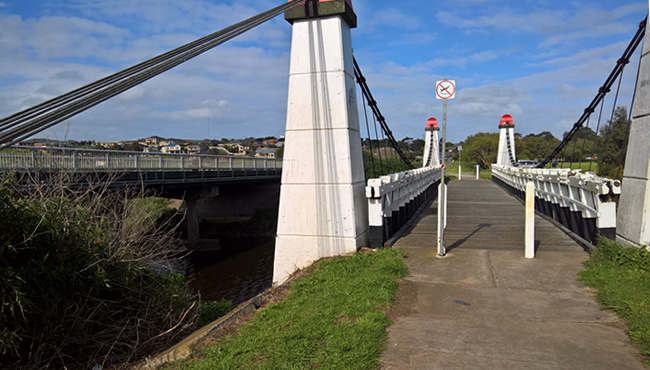
Copyright © Willem Schultink
The old and the new. The original suspension bridge was designed and built in 1890 by Arthur Dobson to service Sir Walter Manifold’s Wollaston Estate. It was replaced by a new bridge – seen through the suspension cables of the old bridge – in the 1960s. The original suspension bridge became part of the National Trust in 1968.
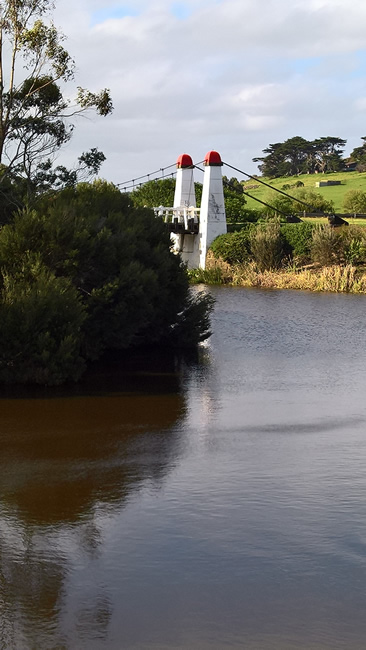
Copyright © Willem Schultink
There are pleasant walks along the banks of the Merri River from the small car park on the eastern bank. The Wollaston bridge is a true suspension bridge, with the bridge deck suspended from the overhead cables. The anchor points for the cables and the stay cables themselves (not the main cables) have been recently replaced.
Victoria State Map – This is Australia! A great and useful travellers’ map of Victoria
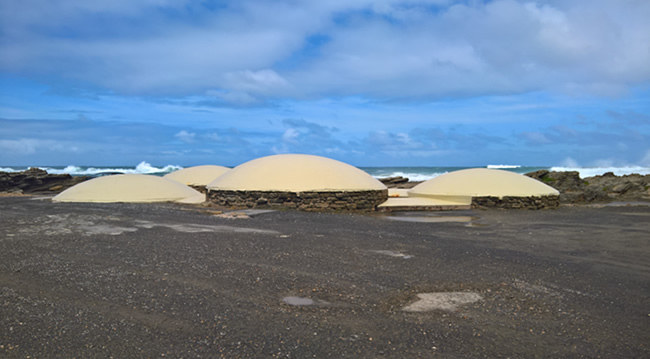
Copyright © Willem Schultink
Built in 1970 and opened in 1971, the Warrnambool Aquarium was popular public attraction until it closed in 1998. The sandstone walls were built using stone from the old abattoirs by Norm Sanders and Ken Farral; the concrete domes by Digger Parker Concrete, with Fotheringhams doing other infrastructure work. To ensure clean water the tanks were drained of most of their water twice daily and refilled with clean water straight from the bay. This meant that only local species were kept and displayed.
When the aquarium was closed in 1998 the council filled them with sand for safety reasons.
Victoria State Map – This is Australia! A great and useful travellers’ map of Victoria
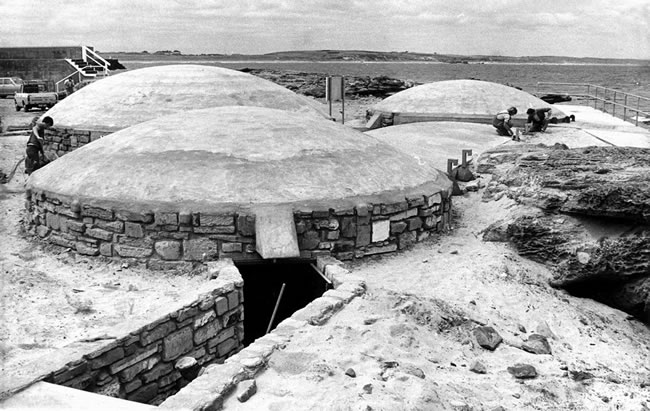
Copyright © Public Domain
Built in 1970 and opened in 1971, the Warrnambool Aquarium was popular public attraction until it closed in 1998. You can see the passageway leading into the aquarium in the foreground. Pic from approximately 1970.
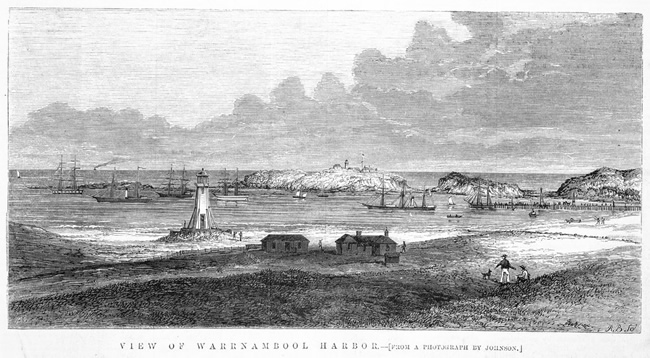
Copyright © Public Domain
A photograph of Warrnambool Harbour taken in 1870 by a Mr Johnson. The photo, which was made into a woodcut, shows the lighthouse and other buildings on the shore, and ships at anchor, was originally published in the Illustrated Australian News. When compared with modern photos of the harbour the changes are immense. Most noticeable is the lack of breakwater, which was just being talked about in the 1870s. The island in the middle of the picture is Middle Island, where there is now a penguin sanctuary. Breakwater Rock is at the left of the picture behind a ship. Merri Island is to the right of Middle Island. Photographed 18 June 1870.
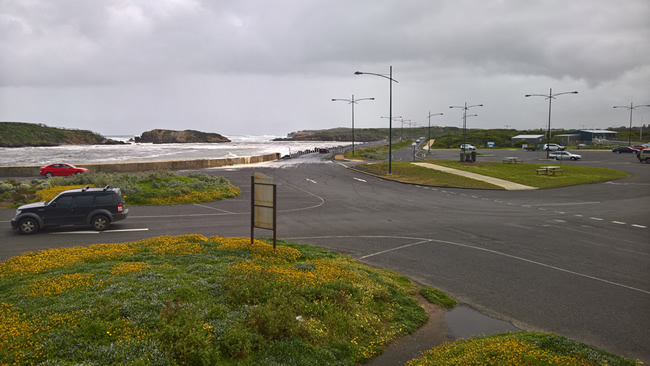
Copyright © Willem Schultink.
Looking west, with the harbour and the breakwater behind the camera. Middle Island is on the left; Merri Island in the centre. The carpark to the right was once part of the bay and the roadway in the centre going away was once the Viaduct.
Victoria State Map – This is Australia! A great and useful travellers’ map of Victoria
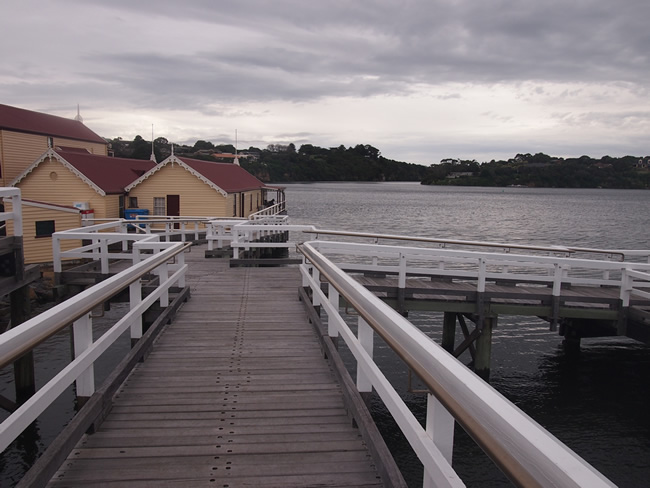
Copyright © Willem Schultink.
Proudfoots boathouse was designed and built by Thomas Proudfoot, beginning with an application for a jetty licence in 1885. The idea was to set up a fishing and boating business. It hired out fishing, rowing and sailing boats. Rods and bait were also available. Morning and afternoon teas were served from about 1888. It was very successful with Melbourne tourists so the second storey was added in 1893. This second storey was used as a guest house.
More info here.
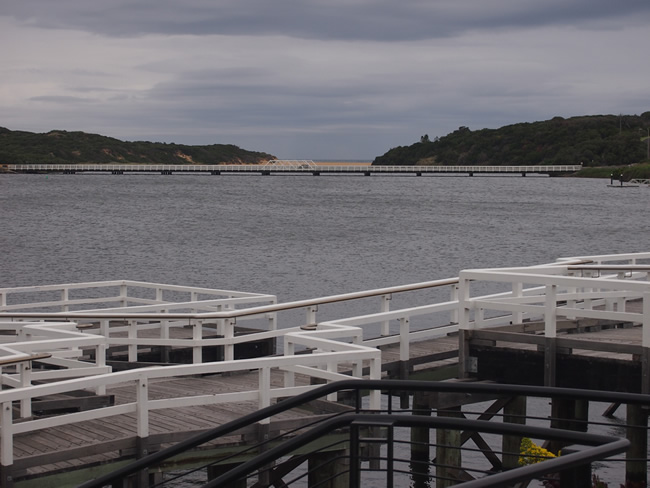
Copyright © Willem Schultink.
Hopkins Point Road is a very old road that appears on a road map of Warrnambool as early as 1856, only 15 years after settlers came to Warrnambool. There was an earlier bridge; the current bridge appears quite new. At this time of year the river mouth was closed, as can be seen beyond the bridge.
This page Copyright © ThisisAustralia.au


All the labels you use every day, with excellent service! EveryLabels.com.au
Victoria State Map – This is Australia! A great and useful travellers’ map of Victoria

